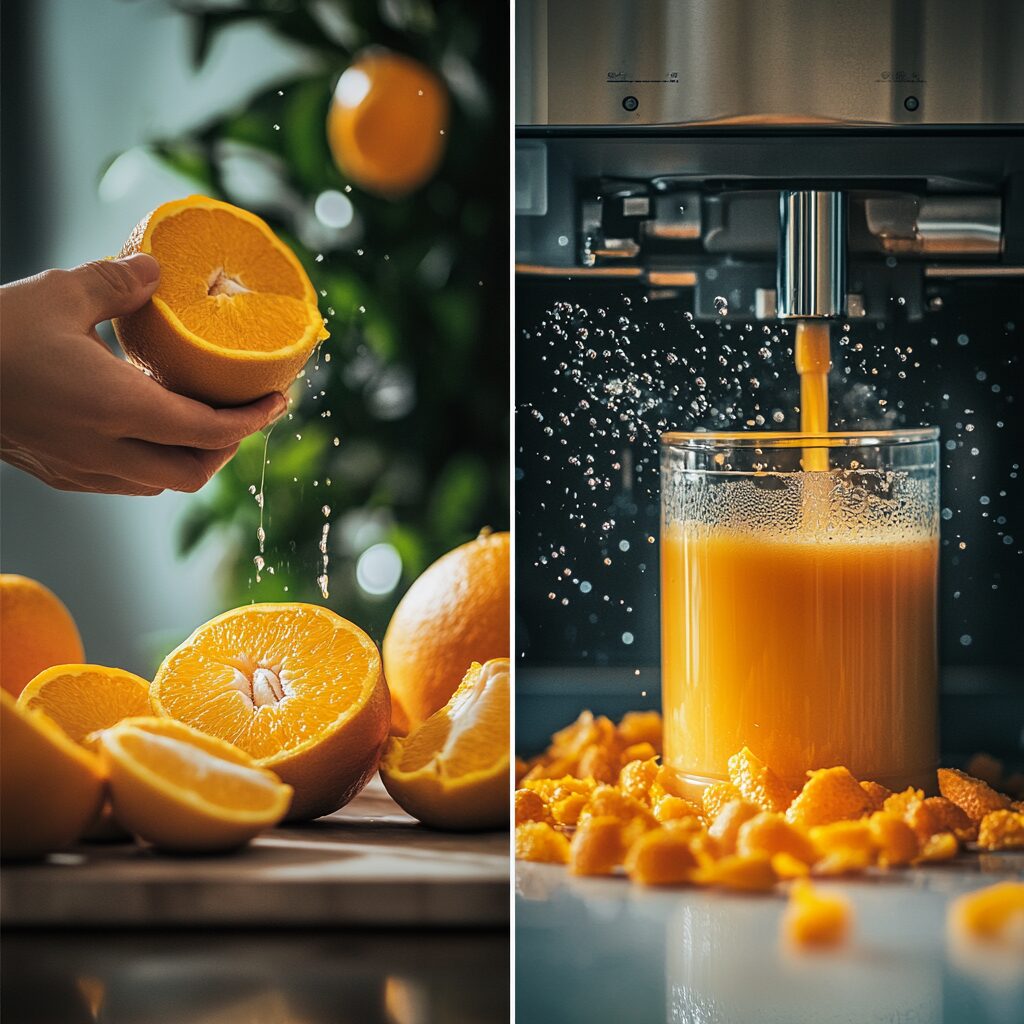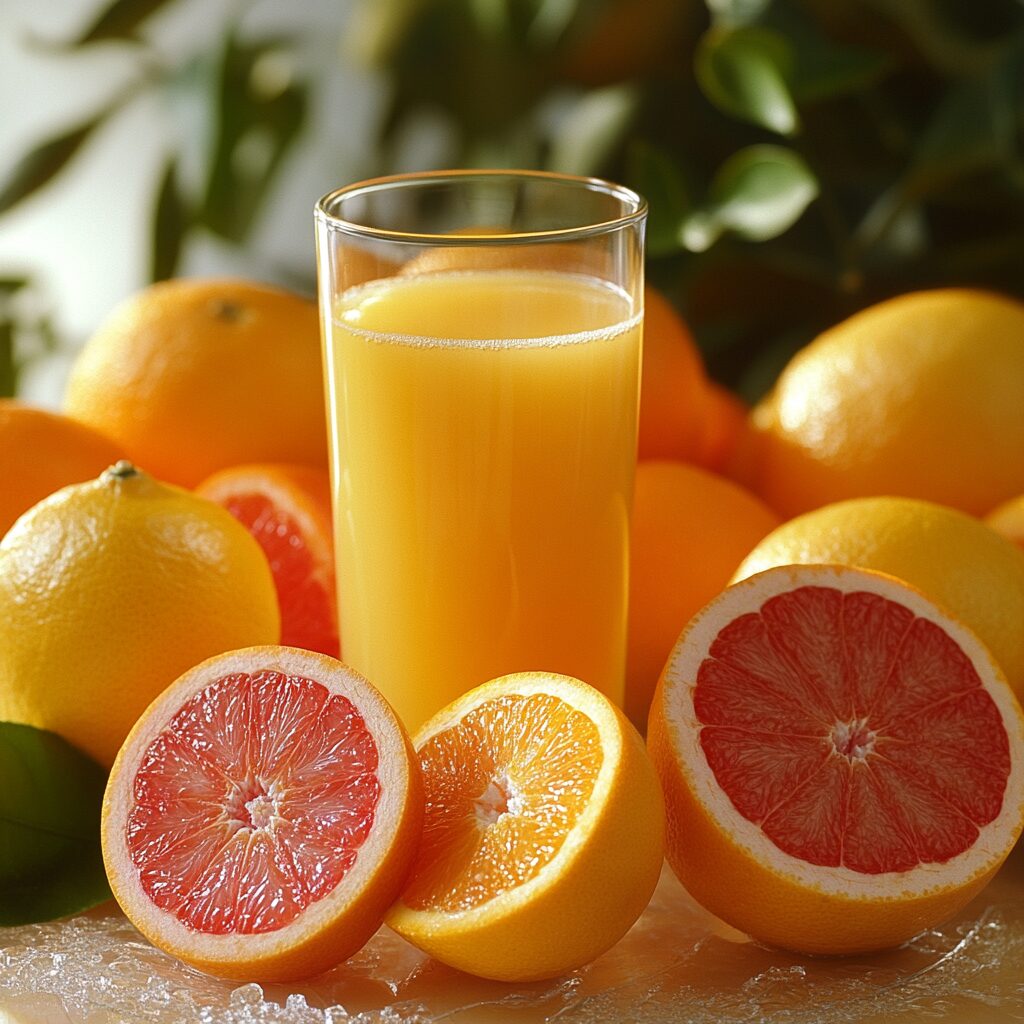Orange juice – it’s the sunshine in a glass that graces breakfast tables worldwide. But what’s really in that golden elixir? Is fresh-squeezed truly superior to store-bought? And are we getting all the benefits we think we are? It’s time to squeeze out the truth about fresh orange juice.
Not all fresh juice is created equal

When we think of fresh orange juice, we often picture oranges being lovingly hand-squeezed into a glass. But the reality is quite different. Many “fresh” juices you find in stores are actually processed and packaged in ways that might surprise you.
Commercial orange juice, even when labeled as “not from concentrate,” often undergoes a process called deaeration. This removes oxygen from the juice, allowing it to be stored for up to a year before it reaches your glass. While this extends shelf life, it can also strip away some of the natural flavors.
To compensate, many manufacturers add flavor packs – essentially, concentrated orange essences and oils – back into the juice. This is why your store-bought OJ tastes consistent year-round, despite seasonal variations in oranges.
The sugar content might shock you
One of the biggest misconceptions about fresh orange juice is that it’s a low-sugar option. In reality, an 8-ounce glass of orange juice contains about 20.83 grams of sugar. That’s roughly equivalent to 5 teaspoons of sugar!
While this sugar is naturally occurring and comes packaged with nutrients, it’s still a significant amount. For comparison, the American Heart Association recommends no more than 6 teaspoons of added sugar per day for women and 9 for men.
This high sugar content means that orange juice can cause rapid spikes in blood sugar levels. For people with diabetes or those watching their sugar intake, this can be problematic.
Vitamin C isn’t the whole story

Yes, orange juice is famously high in vitamin C. A single cup provides about 124 mg of vitamin C, which is more than the recommended daily intake for adults. But there’s more to the nutritional story.
Orange juice is also a good source of folate, potassium, and antioxidants like hesperidin and carotenoids. These nutrients play crucial roles in various bodily functions, from supporting heart health to potentially reducing the risk of certain cancers.
However, it’s worth noting that while orange juice retains many nutrients, it lacks the fiber found in whole oranges. This fiber helps slow down sugar absorption and promotes feelings of fullness.
Pasteurization: A double-edged sword
Most commercial orange juices undergo pasteurization, a process that heats the juice to kill harmful bacteria. While this makes the juice safer to drink and extends its shelf life, it can also affect its nutritional profile.
Some studies suggest that pasteurization can reduce the vitamin C content of orange juice by up to 20%. It may also decrease levels of certain flavonoids, compounds with antioxidant properties.
On the flip side, truly fresh, unpasteurized juice can pose health risks, especially for people with compromised immune systems. It’s a classic case of safety versus nutrition, and each consumer must weigh the pros and cons.
The pulp predicament

To pulp or not to pulp? That is the question. Many people prefer pulp-free juice for its smooth texture, but they might be missing out on some benefits.
Pulp contains fiber and flavonoids that are largely removed when juice is strained. This extra fiber can help slow down sugar absorption and provide a more filling drink. Some studies even suggest that the compounds in orange pulp may have anti-inflammatory properties.
If you’re buying commercial juice, opting for varieties with pulp might give you a nutritional edge. When making juice at home, consider leaving some pulp in for added benefits.
The taste test: Fresh vs store-bought
When it comes to taste, fresh-squeezed juice often comes out on top. The flavor is brighter, more complex, and can vary with the oranges used. Store-bought juices, while consistent, can sometimes taste flat or overly sweet due to processing and flavor standardization.
However, taste preferences can be subjective and influenced by what we’re used to. Some people might prefer the consistent taste of store-bought juice, especially if that’s what they grew up drinking.
What if oranges aren’t in season where you live? Frozen concentrate might be your best bet for a tasty glass of OJ, as it’s usually made from oranges at peak ripeness.
Making the most of your orange juice
If you’re going to enjoy orange juice, here are some tips to maximize its benefits:
1. Opt for whole fruit when possible. You’ll get all the fiber and nutrients without the sugar spike.
2. If you do drink juice, keep portions small – around 4-6 ounces.
3. Choose pulpy varieties for extra fiber and nutrients.
4. Consider making your own juice at home for the freshest taste and to control what goes into it.
5. Look for orange juice fortified with calcium and vitamin D if you’re using it as a milk alternative.
Fresh orange juice can be a delicious and nutritious part of a balanced diet when consumed mindfully. By understanding what’s really in your glass, you can make informed choices about when and how to enjoy this classic beverage. Whether you’re squeezing your own or reaching for a carton, remember that moderation is key. After all, sometimes the best way to enjoy an orange is simply to peel and eat it – nature’s perfect package of flavor and nutrition.

